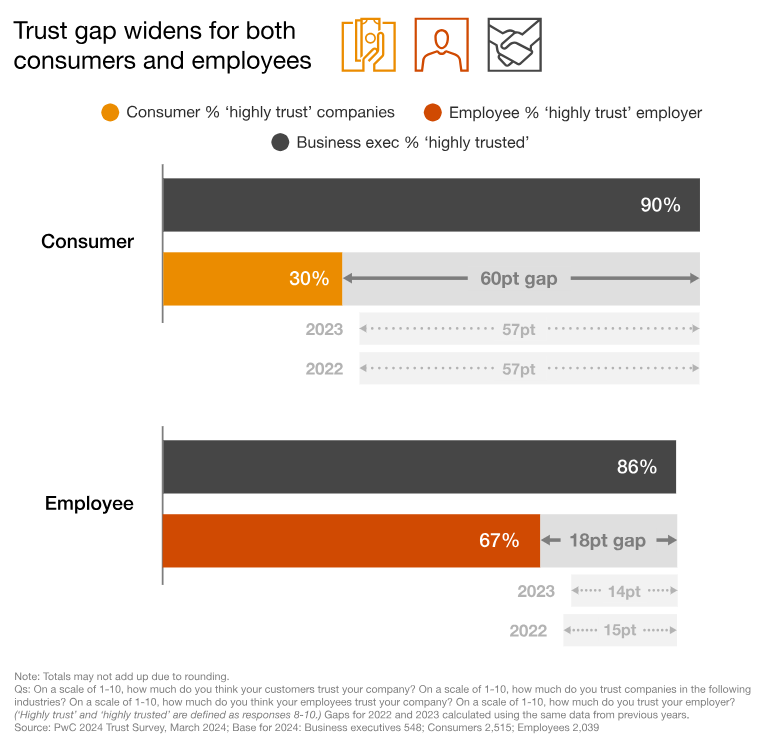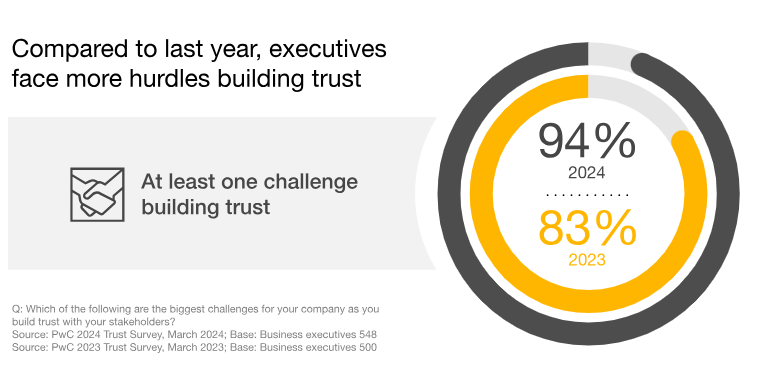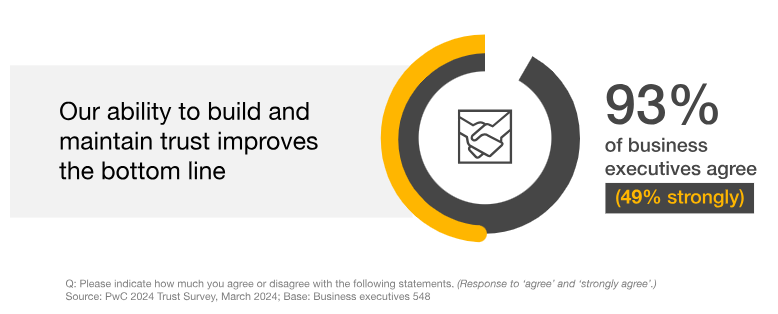'There will be moments where we need to make changes… that doesn't connect when people have associated their workplace with a family'

The trust gap between senior executives and employees is widening, and it’s hurting the bottom line.
That’s according to the latest statistics from PWC’s Trust in US Business Survey, which found that 86% of business executives think employee trust in their organization is high, compared to 67% of employees.
This is a crucial discrepancy, PWC reports, because when employees don’t trust their employer, they don’t quit — but they stay and work poorly.
It’s not a family – but employee trust still requires honest communication
A common trust-eroding mistake made by organizations is referring to their workforce, or teams, as a “family,” says Marie-Hélène Pelletier, associate at the University of British Columbia’s Sauder School of Business.
This common perception that sense of family will breed trust is mistaken, she says – it actually does the exact opposite.
“We can say that we care about each other, that we're working towards a common goal, that we want to be respectful, protective, that we're community – all these things are realistic observations, realistic language about this work relationship,” says Pelletier.
“This is different from family, and that's important because in work relationships, there will be moments where we need to make changes, people may need to be let go. And that doesn't connect when people have associated their workplace with a family.”

However, work relationships still need to have a level of respect and honesty that most people apply to their personal relationships; PWC reported that 83 percent of employees said they would trust their company more if their managers involved them in important decisions.
“In order to build trust in a workplace, some elements are similar to how we build trust in our personal lives, with friends and with family members, where we have to be consistent between what we say and what we do,” Pelletier says.
“We may want to be also realistic about our own experience, our own areas of development. For example, our own areas where we want to improve.”
Employee trust gap affects productivity
According to PWC’s report, when it comes to the importance of trust, executives said the biggest consequence of low employee trust are productivity, quality of products and services, and profit. The executives accurately placed retention lower on the list, but only because 60 percent of employees who don’t trust their employers don’t quit, they just “stay and work half-heartedly.”
“When individuals trust their managers, they're more likely to have conversations with them about what they need from a mental health perspective,” says Pelletier. “The more organizations and managers within the organizations work actively to build that trust, the better.”

Plus, 60 percent of employees said they have recommended their employer to friends and family as a good place to work because they trust the company, PWC reported.
At 77 percent, fair pay and fair treatment shared the top spot as requirements for employee trust in their employer, followed by protecting employee data (72%) and ethical behaviour (72%).
“That should be a reassuring message to leaders,” PWC stated. “Building trust with employees and consumers requires sustained efforts over time, but it’s not necessarily a complex problem to solve.”
Implementation of strategies crucial to employee trust
The fixes may be simple on paper but the most important aspect is actually implementing any changes, Pelletier says.
“Being prepared to implement changes is extremely important. We could do surveys and ask people what is working well, what's not working so well, but if we have not figured out the resources and ways in which we will respond to the feedback we get, then we're going to have this information — people hopefully will have shared some of their thoughts and suggestions — and it's going to go nowhere,” Pelletier says.
“In the end, it's going to send not only a neutral message if nothing changes, but even worse, because now people have shared some of what's working, what's not working, and then nothing gets done.”

Failing to carve out and protect resources to implement specific changes based on feedback means that the whole program can fall by the wayside if other distractions or more urgent matters come up, she says. For this reason, Pelletier recommends having a clear intention for any trust program being launched, and being realistic about its scope.
“If you're asking such a broad range that the list of recommendations is actually impossible to respond to in a decently timely manner, you can't win, it's not going to work,” she says.
“The key element here is to make sure that this is well planned out, that it is connected with other internal initiatives, so that we are increasing our chances of success.”







